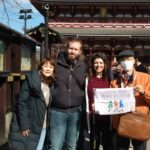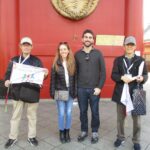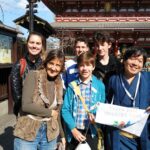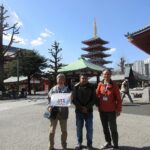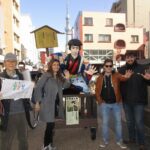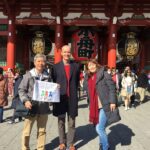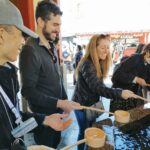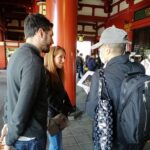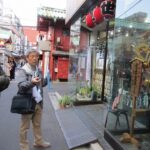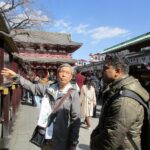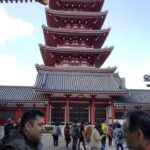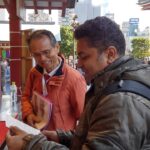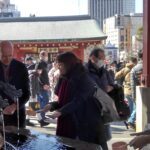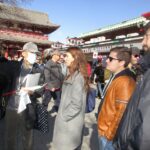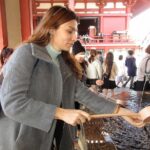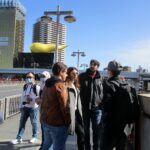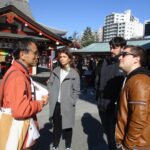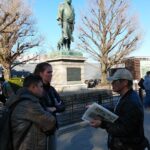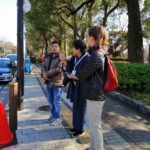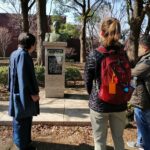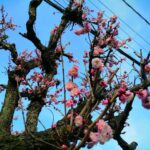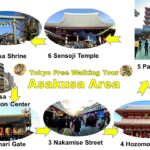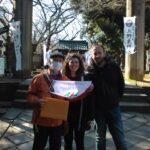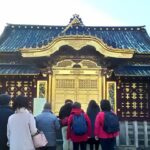Thank you for joining our Tokyo Free Walking Tour in Asakusa and Ueno.
On that day, February 23, we welcomed 18 guests on our walking tour.
These people came from different corners of the world, including Australia, Canada India, Spain and U.K.
Amazingly, Ume, or plum trees have started blooming in Tokyo.
Ume, or Japanese Apricot trees, are flower-bearing trees in Japan that bloom nationwide from late February until the end of March.
The blossoming period of Ume trees serves as a precursor of the sakura season, which normally start blooming in late March through the middle of April.
In Japan, this flowering transition are associated with the relic like ” Ume wa saitaka sakurawa madakina“.
It roughly means “Ume now in full bloom, but Sakura not yet”.
Under this seasonal atmosphere, in Asakusa, we met fourteen people at Kaminarimon Gate and started our 90-minute tour.
Going by the name as Thunder Gate, or Kaminarimon Gate, this Buddhist gate have been an instrument in symbolizing Asakusa.
Actually, the image is used on the cover of Japanese guidebook or souvenir’s package designs.
- A ume tree
- Kaminarimon Gate
Built in 10 centuries, this religious building accompanying with two statues, A God of Thunder and A God of Wind, have served the entrance of Sensoji Buddhist Temple.
Starting with the majestic gate, we strolled around several locations, as this chart shows, in the compound of Sensoji Buddhist Temple and its neighboring areas.
We conclude our tour at the compound of Asakusa Shinto Shrine.
In the afternoon, we welcomed four people and also made the 90-minutes walking along with our tour rout.
At Ueno Tosyogu Shrine, a kind of the Shinto shrine dedicated to the souls of some notable Tokugawa Shoguns, we happened to see “a biwa performance”
The biwa is a four-stringed Japanese lute, and a performer passionately recites a war tale accompanying with the biwa.
- Ueno Tosyugu Shurine
- A biwa performance
- He is showing “gosyuinn”..
- A sakura tree
Aside from the traditional attractions, we saw some guest were collecting his “gosyuin”, or red ink stamps on his stamp-book.
Amazingly again, at the final location, we saw a few sakura trees started blooming at the same time as Ume are blossom.
Ueno Park is full of iconic spots that are enjoyed by many people, and that includes Shinto Shrines, Buddhist Temples, museums and even a food festival.
Aside from their religious purposes, these locations also come in handy as educational areas for those people who are looking forward to learning the culture and traditions of Tokyo in Japan.
This is why Ueno Park is associated with “The Culture of Village”.
(By Arac)


